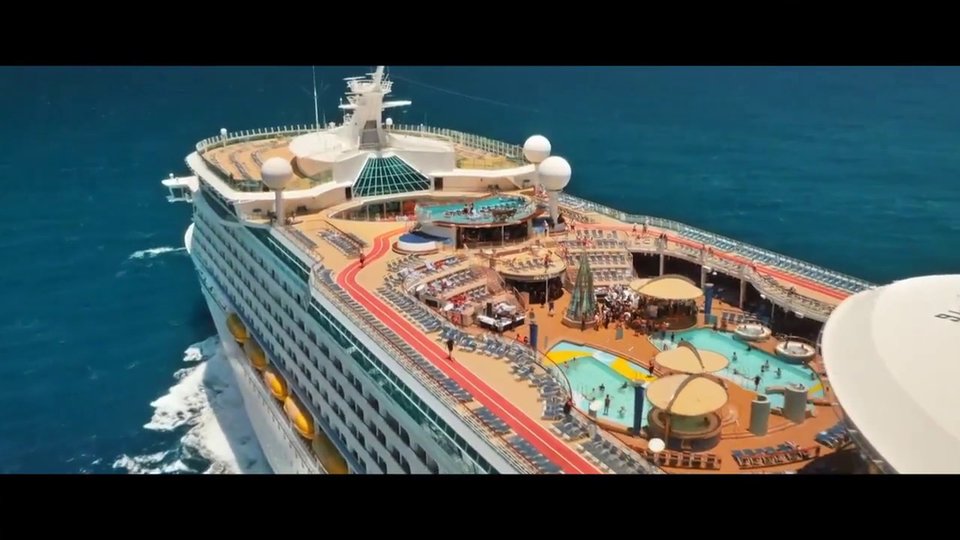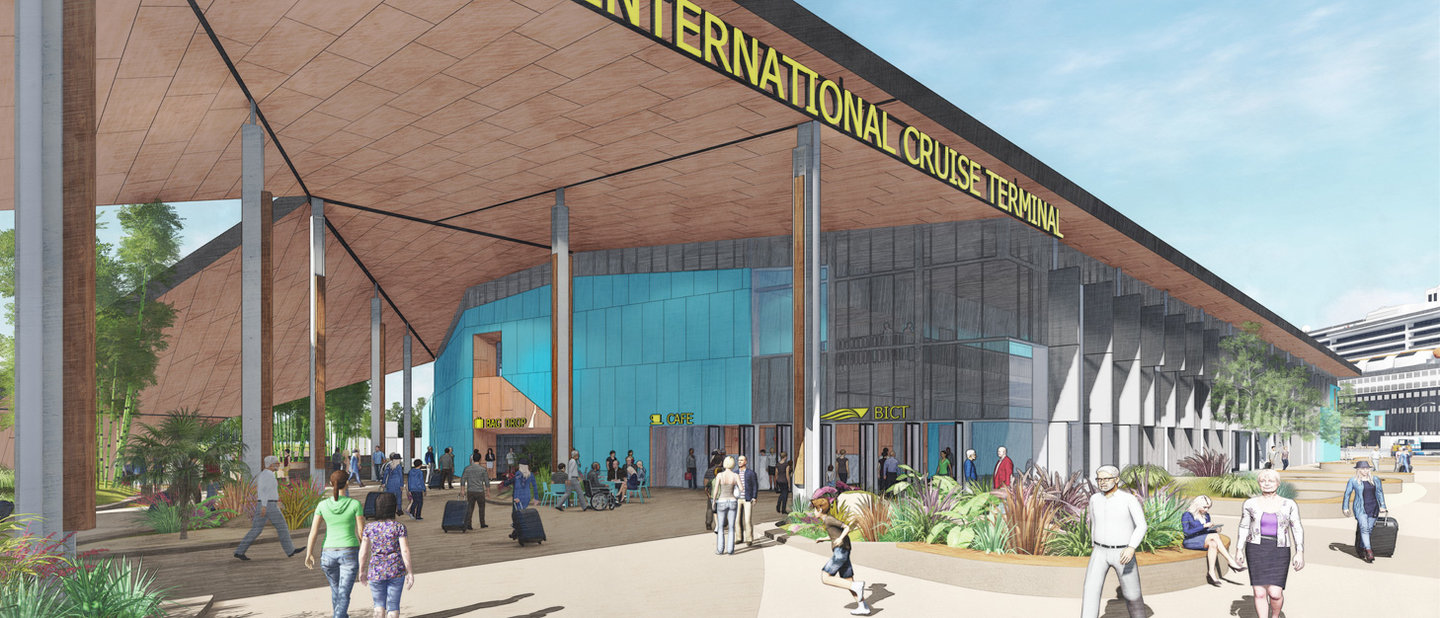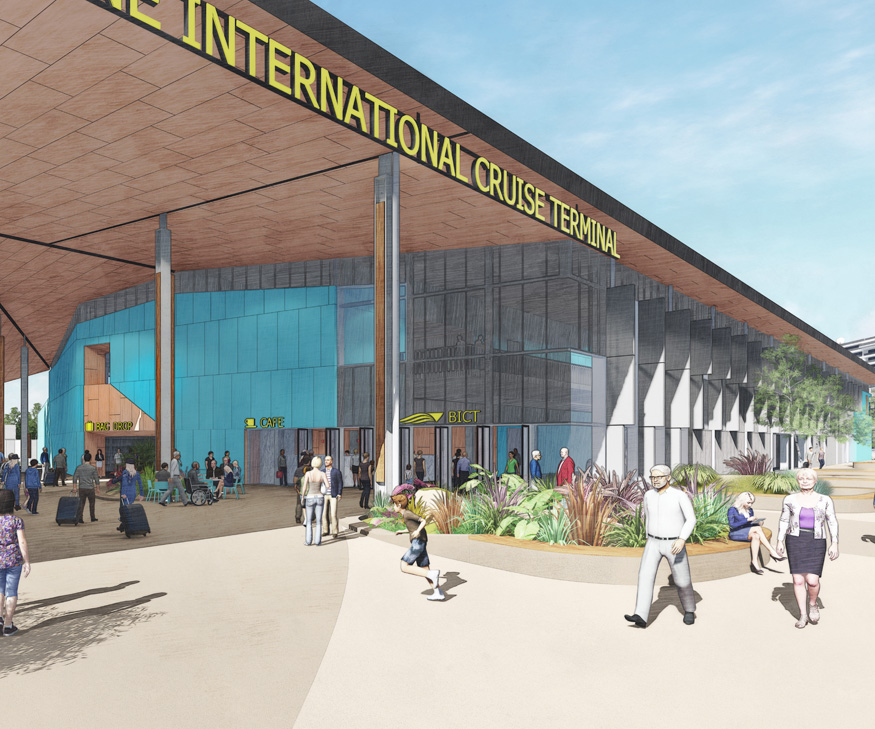Brisbane boosts its cruise appeal with a new mega ship terminal
The Port of Brisbane is building south-east Queensland’s first dedicated mega cruise ship terminal, which will be able to cater to cruise vessels of all sizes. The facility is hoped to transform the city into a major cruise destination, starting from 2019. Callum Tyndall takes a look at the Brisbane International Cruise Terminal project and asks how it will shake up competition in the region.
et to potentially inject up to A$1.3bn in net expenditure into the Brisbane economy over the next twenty years, the Brisbane International Cruise Terminal project aims to capture the attention of the booming cruise industry by offering a dedicated destination for mega cruise ships
Comprised of a 9,300m2 terminal, a 299m long wharf and two air bridges, along with parking, public spaces and extensive landscaping, the terminal will be built at a cost of A$158m to the Port of Brisbane. The expected long term-return in the local economy however, along with the jobs created during construction alone, means that the terminal is likely to serve as a huge boon to the city of Brisbane and possibly the whole state of Queensland as it could massively increase tourism in the region.

Samsung-designed smart bracelets connect to the MSC for Me system. Image courtesy of MSC Cruises
Taking advantage of Australia’s booming cruise industry
As the cruise market continues to expand, mega-ships that can host vastly numbers of guests are becoming more prevalent, but few ports can accommodate these vessels so far. In fact, several popular destinations, for example Venice, have a size limit for cruise ships they can accommodate due to a lack of specialised infrastructure.
Dedicated terminals such as that being built at Brisbane, with their capacity to cater to vessels of all sizes, can therefore be a significant selling point for emerging destinations.
“A dedicated, purpose-built cruise ship terminal will boost our international reputation as a global tourism destination of choice.”
“Cruising is one of tourism’s great growth stories, for both international and domestic markets,” said Queensland Premier Annastacia Palaszczuk when the Brisbane project was announced. “A dedicated, purpose-built cruise ship terminal will boost our international reputation as a global tourism destination of choice. It will serve as a catalyst to supercharge growth in our tourism sector and related industries and generate jobs now and into the future.”
In the last twelve months, Queensland has had more cruise ships than any other state in Australia, according to Tourism Minister Kate Jones, so the demand for additional cruise capacity is clear.
Meanwhile the government of Western Australia has allocated $7mn to upgrade the Port of Broome to enable 24-hour access, and there has been an (admittedly contested) push from Cruise Broome chairman Shayne Murray for local businesses to become more attuned to the cruise industry.
As demand for Australian cruise destination grows, opportunities for coastal cities are abundant if they can create the infrastructure needed to accommodate greater numbers of tourists.
Artist’s impression of the Brisbane International Cruise Terminal. Image courtesy of Port of Brisbane


Overcoming infrastructure challenges to seize cruise opportunities
As a record number of ships make a record number of visits to ports around Australia, with the Maritime Executive reporting at the end of October that the value of the industry had surged past A$5bn for the first time, destinations need to step up their efforts to accommodate more and larger ships.
For example, Sydney, an obviously popular cruise destination, is currently struggling to accommodate the number of cruise lines seeking to visit, and several of its bridges are too low for larger ships to pass under them. Brisbane has had similar issues, with the height of its Gateway Bridge preventing the larger tier of cruise liners from docking at the harbour proper. As the world’s fifth-largest cruise market, there is a massive opportunity for Brisbane to take advantage of the industry’s growth and establish itself as the port of choice for mega ships.
“An estimated 60% of the 81 cruise ships on order globally would be unable to fit under the Sydney Harbour Bridge to reach the city’s second operational terminal.”
The lack of supporting infrastructure continues to be the main constraint on cruise growth; for instance, an estimated 60% of the 81 cruise ships on order globally would be unable to fit under the Sydney Harbour Bridge to reach the city’s second operational terminal. This means there is a risk the growth of cruise business will stall while projects such the new Brisbane terminal are completed.
Daniel Gschwind from the Queensland Tourism Industry Council explained to ABC News the relief that the new terminal would provide. "We will, in the next few years, see a presentable access point to Brisbane for cruise passengers,” he said. "The main issue is that, apart from the smaller ships that can access Portside Wharf, we have simply no place to put them other than the commercials wharves which is anything but a pleasant experience for most visitors.”
The prospect for further investment into such projects is promising; in Queensland alone Port North has invested A$120m to upgrade the Port of Cairns, and the Port of Townsville has a A$520m plan to widen and deepen its access channel over five years.
The projects underway and planned for the near future will certainly go a significant way towards meeting the cruise industry’s growing demand for destinations in Australia.